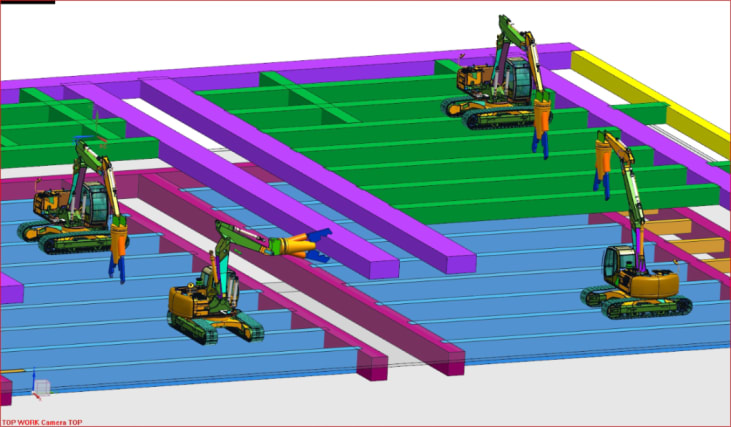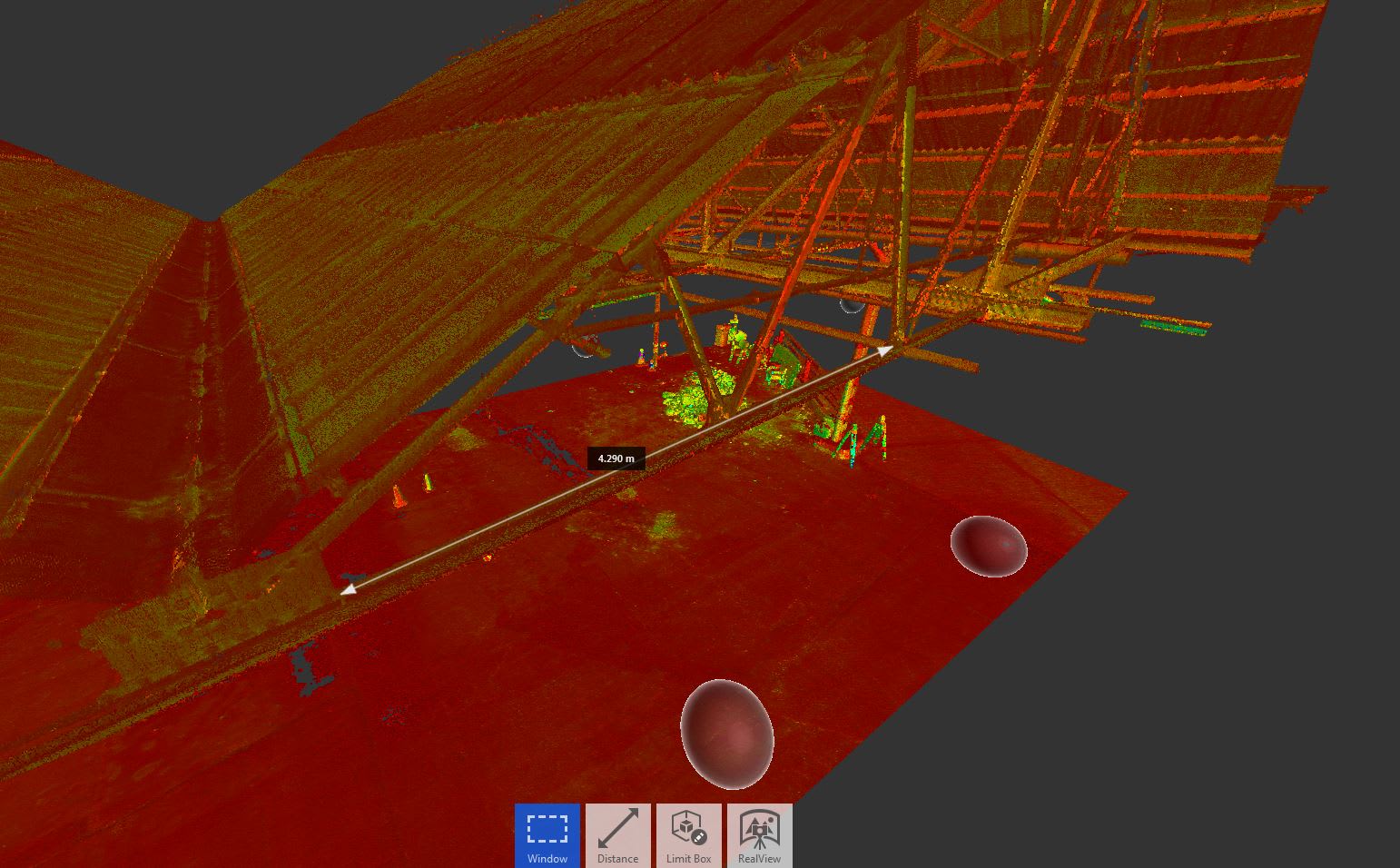BIM+ talks to Mark Coleman, managing director of The Coleman Group and deputy chairman of the CIOB’s Birmingham Hub, about how BIM can make a difference on demolition projects.
What are the main benefits of BIM for demolition and structural alteration work?
At The Coleman Group, we use 3D BIM for structural analysis and design, and 4D BIM to plan and programme. A BIM model helps us understand the impact of removing structural elements, what kind of machinery the structure will support, how much articulation our demolition equipment will require, how our work will interface with other trades and detect clashes.
It allows us to present visualisations of our work to clients, and walk them through the sequence of our works. It also makes the site much safer by virtue of all of the upfront planning, sequencing and modelling.
There is a tendency to see BIM as useful only for new build. We are now seeing more BIM questionnaires at prequalification stage and Revit models at tender stage, but generally, construction take-up has been poor.
With my CIOB role, I want to highlight how BIM can help on cut and carve projects – we must take advantage of the safety and efficiency improvements possible through embracing technology.
How would you typically use BIM?
On major projects, we are supplied with a BIM model by the client or main contractor. We then interrogate the model, and our engineers would look at constraints or challenges, and in some cases, offer design development suggestions within the model – we aim to enhance its use for everyone else working on the scheme. However, the models vary in detail.
As built drawings can’t always be relied on, we carry out our own global stability analysis on many structures that we work on.
What are good examples of projects where BIM has helped your work?
At Birmingham New Street Station, on the atrium demolition, the programme needed to be cut from 12 to six months. So we took the BIM model and worked with Mace’s lean construction consultant Brian Swain to plan every single working day – highlighting sequence clashes, maximising utilisation of the plant and planning debris removal timings.
We used the BIM model to create exclusion zones around demolition works to improve safety of other site workers. We completed the programme in five months, which was partly due to doubling shifts, but chiefly because BIM allowed high levels of collaboration while working in a lean environment. The atrium phase was also delivered accident and injury free.

At Birmingham New Street, Coleman developed a bespoke excavator with JCB using 3D modelling to carry out the demolition works, and imported this into the client’s BIM model
On Three Snowhill, an office project, we had to make structural alterations to a five-level basement car park, and the programme meant our operations would interface with other trades carrying out permanent structural works.
Main contractor BAM provided us with a Revit model, and we used it to plan the logistics, and flagged up clashes with the structural designer.
For example, we needed to install a prop to support a podium slab, which would have caused a clash when the slipform contractor installed a concrete wall. So instead, we used two props which transferred the load into a central supporting beam. This allowed the wall structure to fit between the two props, with a corbel support (formed in concrete) introduced to the permanent structure design.
Can BIM help for more conventional demolition projects?
Yes – and on some demolition projects, we will create our own BIM model. We have recently acquired a high-definition 3D scanner to survey structures. It sits on a traditional survey tripod, can rotate around 360 degrees, and creates a 3D digital point cloud. From this, we can create the 3D model and then our method statement, programme and safety documents. Crucially, it helps communicate visually what we are doing to clients and the team on the ground.

On the Wolverhampton Bus Depot demolition, Coleman used a 3D scanner to create a digital point cloud, from which a BIM model was created. The model was then used to plan demolition sequencing
We have used the scanner on the demolition of Wolverhampton Bus Depot. It has a steel portal frame, and the model we created from the point cloud allows us to determine section sizes, and plan the demolition sequence – crucial when there are big machines snipping through the trusses, and removing the wrong section too early might affect the structure’s stability.
This is leading to big time savings. If an engineer measured the depot using a MEWP, it would take seven days. We laser scanned it in a day. The technology is also far more accurate than traditional surveying methods.
How does BIM or digital technology help with machinery use?
The BIM model tells us what machinery loads the structure can carry and any constraints on operations. At New Street, we calculated we could use a 25-tonne excavator using significant temporary works, which would make the job far more efficient than a 2.5-tonne Brokk robot which would typically have been used.
So we developed a bespoke excavator with JCB using 3D modelling, and imported this into the client’s BIM model. It is remote controlled, so the operator can be outside the cab when guiding the attachment, with a full 360-degree view.
The excavator improved productivity immensely. It was also safer – there is an infrared field which cuts off the power if the machine passes a ‘virtual safety barrier’. It has a modular design, making delivery easier and allowing it to be assembled on site and moved from floor to floor as work progressed. We are now using the machine on other specialist projects.
Are we moving towards a world where demolition machinery will be mostly remote controlled or even automated?
We are certainly heading in that direction. Brokk demolition robots are remote controlled, and they can be programmed to tackle work in a certain sequence, so that key structural elements are not removed too early.
The next step is to link that to BIM. The day may come when we tag structural elements in the BIM model which are then automatically dismantled by machinery, with the operator controlling remotely as if it was a video game.
Where is Coleman on the BIM journey?
We are at BIM Level 1, moving up to BIM Level 2. We are investing £200,000 a year in the technology – in terms of software, equipment and training – and we have a team of four engineers fully conversant with BIM.
Our software suite handles all types of BIM models and we use 3DX MAX animation software to demonstrate all our operations, including plant activity and truck movements. We also use Navisworks which allows anyone in a project team to view the BIM model in read-only mode and is great for providing visual communication of our works.
BIM requires considerable investment in time and resources – across the business generally, and at the front end of a project – and importantly the will to use it. On projects where we’ve used BIM, we could have done without it, but we wouldn’t have achieved the same benefits in terms of speed, productivity and collaboration.
Top image: On Three Snowhill, Coleman created two temporary props (shown in blue) to support overhead loads, which allowed the permanent wall structure to be built in between.
Comments
Comments are closed.














For me, I have a question “Does BIM Really Improve Collaboration?”